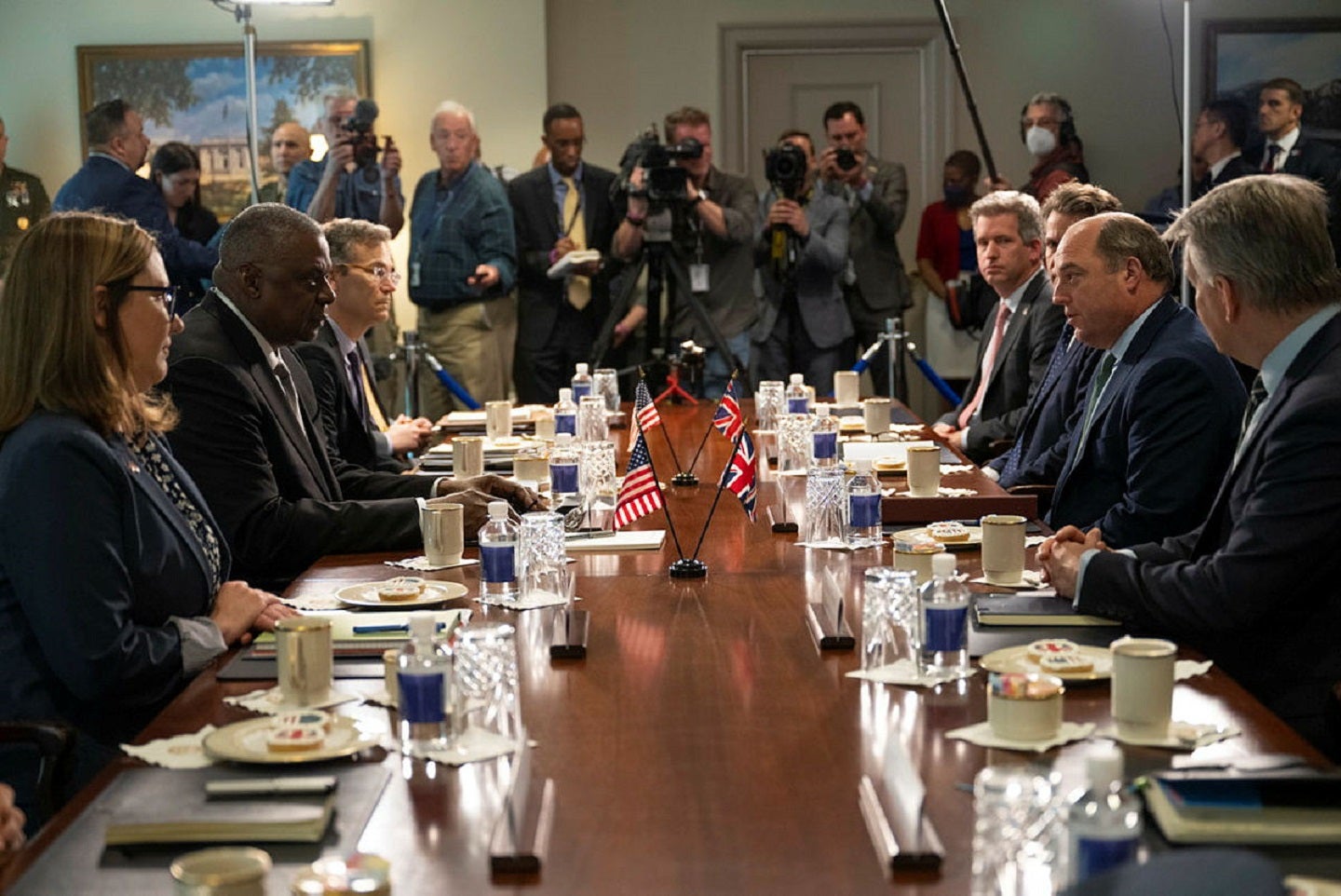
The UK Defence Committee has published a report today, 7 March 2023, that identifies challenges in working with the US in the current security climate.
While the ‘Special Relationship? The US, UK, and NATO’ report does emphasise the value of the UK-US relationship – as demonstrated by their joint approach in response to Russian aggression in Ukraine – it finds the US limits integration and engagement with its partners.
With the current security situation heating up as autocratic regimes, such as Russia and China threaten the international rules-based order, the Nato coalition and their democratic allies have employed a strategy “to achieve the closest possible integrated operating picture across domains”, however, “that relies on information sharing, base collaboration and co-operation on platforms”.
This strategy has become more difficult to achieve for the UK and others as the US has stringent export controls on arms, technology and equipment that limit international defence industrial co-operation.
This then stifles innovation and international interoperability when facing threats in the geopolitical environment.
The report touches on the problems the US prompted when it came to the withdrawal from Afghanistan. The outcome of the Doha Agreement was the return of the Taliban to power in a country where the UK lost 457 service personnel and the MoD assessed that it had spent £27.7bn on Operations Herrick and TORAL.
The report states that “it is clear that the signing of the Doha Agreement served domestic US Administration priorities of the time. The absence of other Nato Allies and the Afghan Government at the Doha negotiations meant that decisions taken did not necessarily reflect the interests of all involved”.
The American strategy
In a ‘Virtual Mission Brief on the Role of Allies and Partners in the US National Defence Strategy’, the Assistant Secretary of Defence for International Security Affairs, Dr Celeste Wallander, spoke to the Centre for a New American Security (CNAS) about the US Department of Defence’s (DoD) global strategy.
In the discussion, the Assistant Secretary spoke about finding the optimum level of American integration when it comes to international collaboration. Dr Wallander noted that “rightsizing the posture has been built upon working with allies and partners in the region on their own capabilities”.
The Americans consider themselves to serve a limited leadership role within the integrated coalition, directing and helping bolster their allies and partners on their own capabilities.
This contrasts with the UK Defence Committee’s interpretation for a more seamless exchange that does not impede sharing and does not limit the deployment of resources, from equipment to knowledge and data.
“Despite the degree of interconnectedness, it [is] acknowledged that the relationship is reliant on continued engagement and exchange” the report states.
The problems posed by ITAR and the UK economy
The International Trade and Arms Regulations (ITAR) are protectionist restrictions that the US have in place that are widely considered to obstruct defence industrial co-operation. It is a central point of criticism in the report.
The MoD spends about half a billion pounds a year complying with all the ITAR requirements which “is half a billion we cannot spend on our industry or on the US’s industry” the Secretary of State for Defence Ben Wallace has asserted.
Wallace has explained to the House of Lords International Relations and Defence Committee that inflation and unfavourable foreign exchange rates had affected the MoD’s ability to implement the large capital project commitments in the Defence Command Paper (Type 26 and Type 31 frigates; Challenger 3 upgrade; and Ajax).
The National Audit Office (NAO) in their report on the MoD’s equipment procurement (published in March 2022), states that their estimated budget deficit for 2022–2032 if all identified risks materialise, including inflation and the unfavourable exchange rates, is £7.3bn.
In the NAO assessment, they note that of the £242.3bn Equipment Plan 2022–23, £33bn is in US Dollars and £13bn is in Euros. This demonstrates the margin of spending on US protectionist policy, as well as the position of the US on the edge of the integrated coalition.
The desired outcome
It is all well and good manufacturing new platforms that can operate to a mutual standard across Nato militaries, like with the components for the F-35 stealth fighter, or Britain’s Challenger 3 main battle tank ammunition. But this is not enough. US export controls like the ITAR only serve to impede mutual efforts to achieve shared military objectives, as well as shared political values.
This is why the UK report advises that the UK should explore the value of linking contracts to increase their exports to the US and lobby the US Administration to reduce the regulatory burdens placed on UK defence companies.
It also suggests that while “it is vital to maintain some sort of technology sharing with the US, UK efforts to develop innovative technological solutions with allies should also look wider afield”.
We have seen the UK implement this policy already in recent months, with its greater global industry collaboration with Italy, as the two countries commit to pool resources as they confront the space and cyber domains, and Saudi Arabia in their joint statement of intent to build on their combat air industry collaboration.




